Live Edge Wood Figure
For live edge tops, the wood figure – or appearance – is unique to each wood slab. Some species, like curly maple, will have a distinctive pattern that it will display, but each tree will present differently depending on its lifespan or how the wood was cut.
Some of the most commonly found patterns include birds eye, blister, burl, curl, dimple, fiddleback, flame, ghost, quilted and spalted.
In addition to the patterns seen in the wood, the figure will be unique to each top and becomes a part of the design of the top. Some examples of these figure attributes include sapwood, grain pattern, bookmatched slabs, crotch figure, spalting and cracks.
Sapwood & Grain
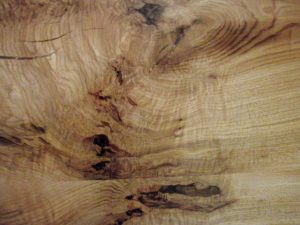
This live edge top is a great example of the dark sapwood and coarse grain typically found in red oak. The wood figure here follows the curved pattern of the grain leading into the intricate and dramatic crotch figure, giving this top a dynamic design.
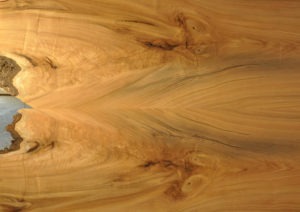
The feathered central figure on this butternut top pulls in focus to the middle of the slab and creates a nice delicate balance throughout the wood.
Bookmatch
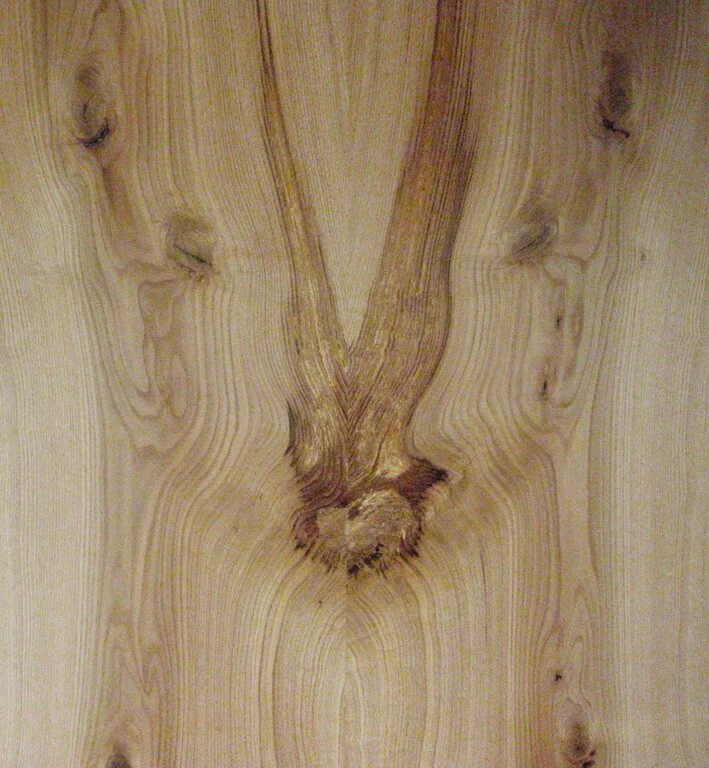
This is a close-up of a bookmatched pair of live edge slabs. We do our best to match the grain and figure to make a symmetrical design throughout the top. The knot in the middle creates a focal point pulling your attention up along the figure to the end of the top.
Crotch Figure
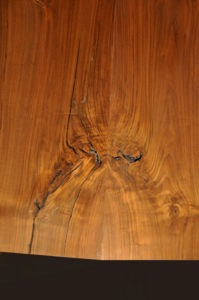
This top illustrates a great example of crotch figure. This desirable figure pattern occurs where a branch is formed from a trunk, or where two branches are knit together. Crotch wood can be difficult to harvest properly as it tends to dry at a different rate than the heartwood in the kiln. This process makes quality crotch figure patterns difficult to find and a real asset to live edge table designs.
Spalting
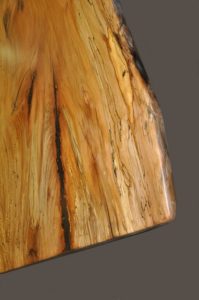
Would you believe this dark, dramatic figure is the result of decay? This natural decay pattern begins at the site of an injury and grows along the trees and logs. Spalting is most commonly found in maple, birch, and beech trees. As the decay spreads through the natural grain, it enhances the look of the slab by providing great contrast and intrigue.
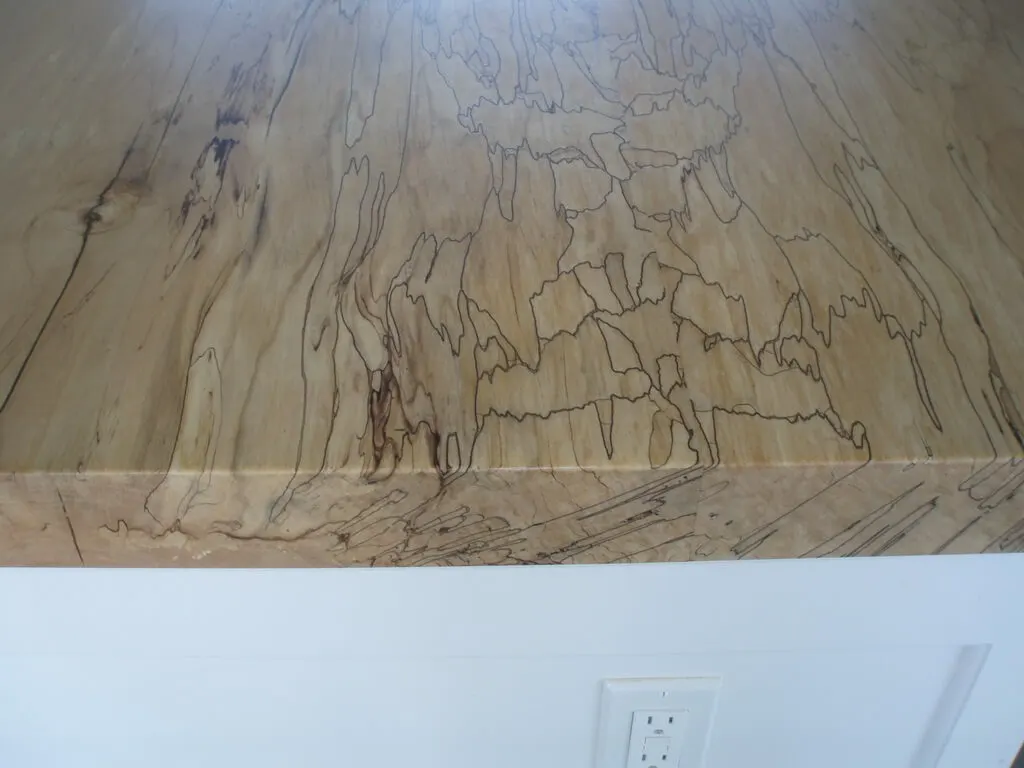
This is the type of spalting that all woodworkers long to find. While the spalting usually occurs along the grain, it will occasionally spread throughout the wood, creating a spider web-like pattern.
Cracks
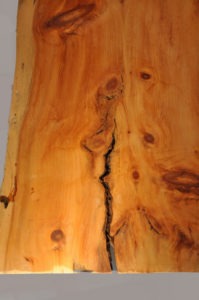
The crack in this pine wood top illustrates the power of nature and in its struggle against machines. The buildup of tension in the flattening and drying process causes the split, which is then finished so there is no fear of splinters or snags. We can also fill it with clear or colored resin for an uninterrupted, smooth surface.
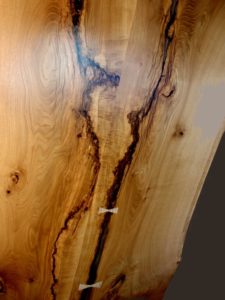
The beauty of this top is enhanced by the two cracks running down the middle, adding depth of color and intrigue. Structural supports are added with butterfly joint inlays as both a decorative element and to prevent further cracking.
Getting a Quote:
For more information on our live edge wood slabs and products, feel free to browse our inventory and examples. For pricing, email quotes@brookscustom.com with any photos or drawings you have for your project. Our design team will review your information and return a proposal: 1-2 days for standard items; 2-5 days for custom work; a week plus for architectural custom projects.